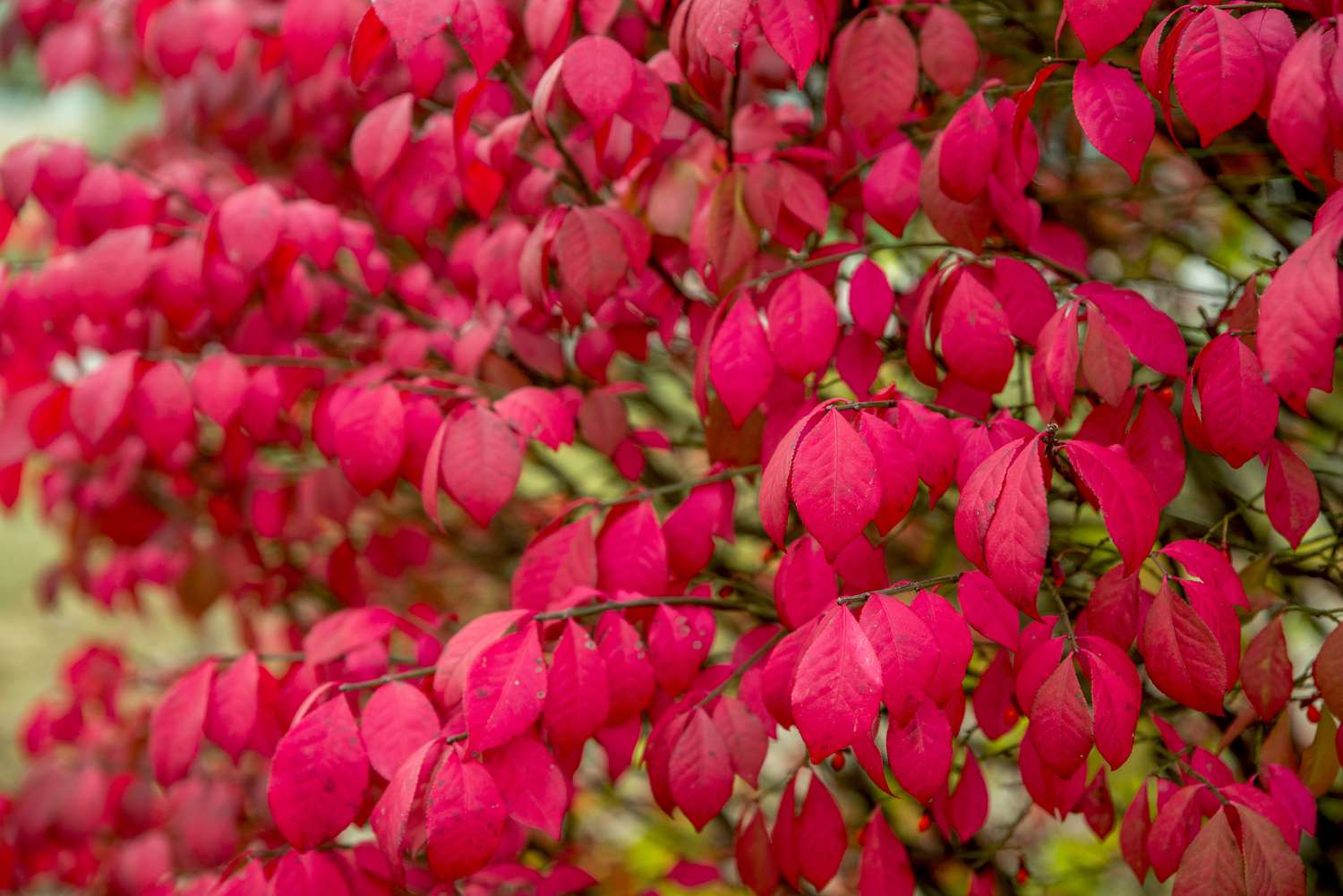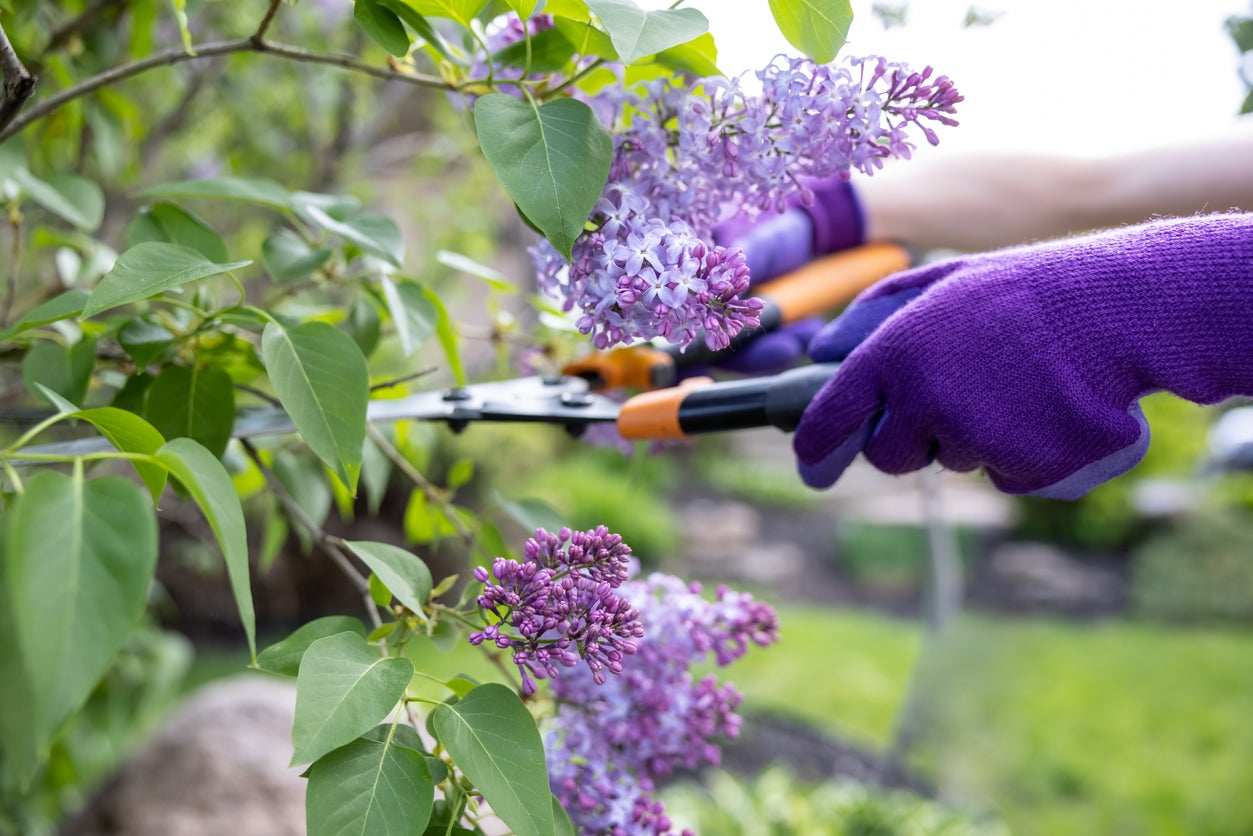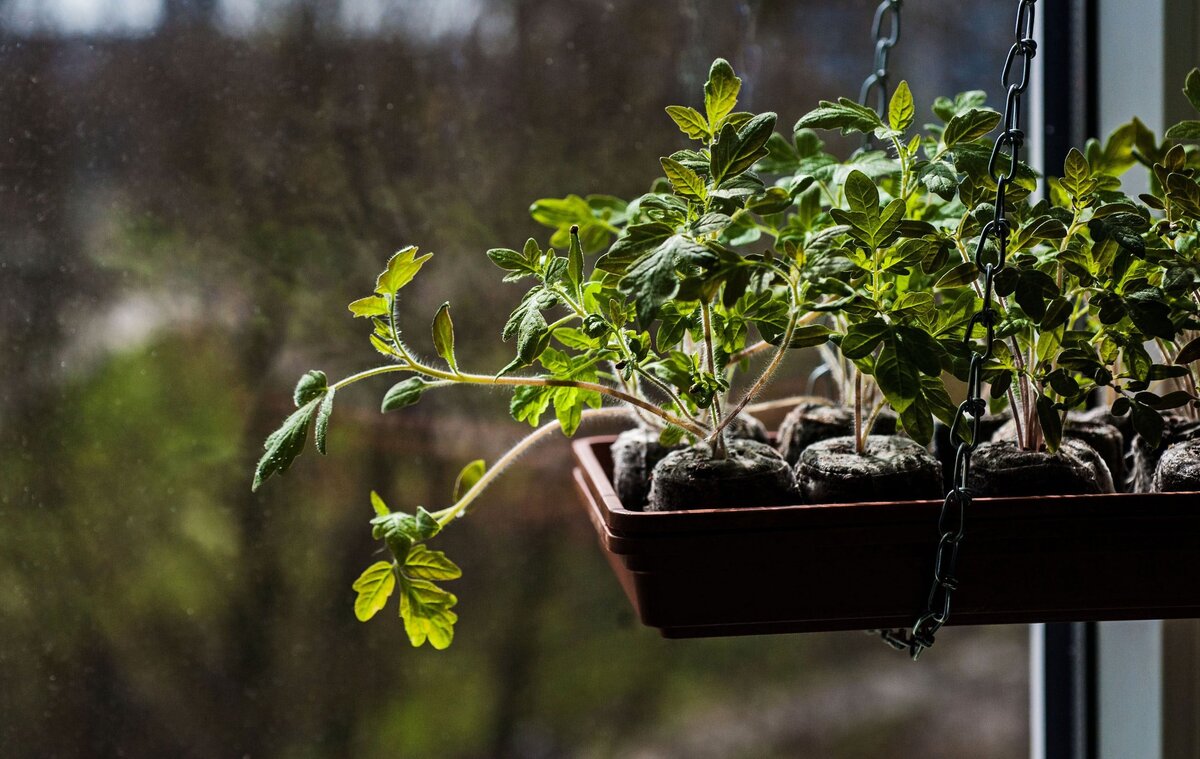Home>Gardening Techniques>Plant Care>When To Prune Burning Bush Shrubs


Plant Care
When To Prune Burning Bush Shrubs
Modified: January 22, 2024
Learn when to prune your burning bush shrubs for optimal plant care. Find out the best time and techniques to ensure healthy growth and vibrant colors.
(Many of the links in this article redirect to a specific reviewed product. Your purchase of these products through affiliate links helps to generate commission for Chicagolandgardening.com, at no extra cost. Learn more)
Table of Contents
Introduction
Welcome to the world of plant care! If you have a burning bush shrub in your garden or are thinking of adding one, it’s essential to understand how to properly care for and maintain this beautiful plant. Pruning is a crucial aspect of plant care, as it helps maintain the size, shape, and overall health of your burning bush shrub.
In this article, we will guide you through the process of pruning burning bush shrubs, providing you with valuable insights and tips to ensure that your plants thrive and look their best. Whether you are a seasoned gardener or just starting out, this information will help you make informed decisions about when and how to prune your burning bush shrubs.
Before delving into the specifics of pruning, let’s first take a moment to understand what burning bush shrubs are and why they are such a popular choice for gardens.
Burning bush shrubs, scientifically known as Euonymus alatus, are deciduous plants native to East Asia. These shrubs are known for their stunning display of fiery red fall foliage, which is the main reason why they are highly sought after by gardeners. Not only do they add vibrant color to any landscape, but they are also relatively low-maintenance and adaptable to various soil types, making them an excellent choice for both novice and experienced gardeners.
However, like any plant, burning bush shrubs require some care and attention to ensure they grow and thrive. Pruning is an essential part of that care, as it helps maintain the shape and size of the shrub, promotes air circulation, and encourages the growth of new, healthy branches.
Now that we have a basic understanding of burning bush shrubs and the importance of pruning, let’s explore the various reasons why pruning is necessary for their overall well-being.
Understanding Burning Bush Shrubs
Before diving into the process of pruning, it’s important to have a deeper understanding of burning bush shrubs. This knowledge will help you better care for and appreciate these vibrant and versatile plants.
Burning bush shrubs, also known as winged euonymus or spindle tree, are deciduous shrubs that belong to the Euonymus genus. They are native to East Asia and are popular for their stunning display of fiery red foliage in the fall. The scientific name for burning bush shrubs is Euonymus alatus, derived from the Latin words “euonymos” meaning “of good name” and “alatus,” which refers to the wing-like protrusions on the branches.
These shrubs typically grow to a height of 6 to 9 feet (1.8 to 2.7 meters) and have a spread of 6 to 9 feet (1.8 to 2.7 meters) as well. The leaves of the burning bush shrub are oval-shaped, serrated along the edges, and arranged in an opposite pattern along the branches. During the summer months, the leaves are a vibrant green, creating a lush and inviting appearance.
However, the true star of the burning bush shrub is its fall foliage. As the weather begins to cool, the leaves transform into a striking shade of crimson red, resembling a blazing fire. This incredible color change is what gives the shrub its name and makes it a highly sought-after addition to any garden or landscape.
In addition to its stunning visual appeal, burning bush shrubs are relatively easy to care for, making them suitable for both beginner and experienced gardeners. They are adaptable to various soil types and can tolerate both partial shade and full sun, although they tend to exhibit their best fall color when exposed to ample sunlight.
Burning bush shrubs are also known for their durability and resistance to pests and diseases. However, they can occasionally be susceptible to certain issues such as scale insects, spider mites, or powdery mildew. Regular monitoring and proper care can help prevent and manage these problems if they occur.
Now that we have a better understanding of burning bush shrubs, let’s explore the reasons why pruning is necessary to maintain their health and shape in the next section.
Reasons for Pruning Burning Bush Shrubs
Pruning is an essential practice when it comes to maintaining the health and appearance of burning bush shrubs. Understanding the reasons behind pruning will help you make informed decisions about when and how to prune your plants.
The primary reasons for pruning burning bush shrubs are:
- Maintaining shape and size: Over time, burning bush shrubs can become overgrown or develop irregular shapes. Pruning allows you to control the size and shape of the shrub, ensuring it remains visually appealing and well-proportioned in your garden or landscape.
- Enhancing aesthetic appeal: Pruning helps promote a more compact and well-groomed appearance for burning bush shrubs. Removing dead or damaged branches, as well as any unwanted growth, improves the overall aesthetic appeal of the plant, allowing its natural beauty to shine.
- Encouraging new growth: Regular pruning stimulates the growth of new branches and foliage. By removing older and weaker branches, you create space and resources for new growth to flourish, resulting in a healthier and more vibrant burning bush shrub.
- Promoting air circulation: Dense growth within the shrub can hinder proper air circulation, leading to increased humidity and potential fungal issues. Pruning helps create space between branches, allowing for better airflow and reducing the risk of diseases.
- Managing plant density: Pruning can help control the density of the burning bush shrub. Thinning out the plant by selectively removing branches improves light penetration, reduces competition for resources, and promotes overall plant health.
It’s worth noting that pruning should not be approached with a “one-size-fits-all” mentality. Every burning bush shrub is unique, and the pruning needs may vary depending on factors such as age, growth rate, overall health, and aesthetic preferences.
Before pruning your burning bush shrub, take a step back and assess its current state. Determine the specific goals you have in mind for the plant, whether it’s achieving a certain shape, rejuvenating older growth, or maintaining its current size. This will guide you in making the right pruning decisions.
Now that we understand the importance of pruning burning bush shrubs, let’s explore the optimal timing for pruning these plants in the next section.
When to Prune Burning Bush Shrubs
Timing is crucial when it comes to pruning burning bush shrubs. Pruning at the right time ensures optimal plant health, encourages new growth, and allows for the full display of their vibrant fall foliage. Here are the key factors to consider when determining when to prune your burning bush shrubs:
- Prune during dormancy: The ideal time to prune burning bush shrubs is during their dormant season, which typically occurs in late winter to early spring. Pruning during this time minimizes the risk of interrupting the shrub’s blooming or fall foliage display. It’s best to wait until the coldest part of winter has passed to ensure the plant has a chance to undergo its natural dormancy period.
- Wait for leaf drop: Before pruning your burning bush shrub, it’s important to wait until the majority of its leaves have dropped. This indicates that the shrub has entered into its dormant stage and is ready for pruning. Removing leaves beforehand can disrupt the natural process and potentially harm the plant.
- Avoid pruning during active growth: Pruning during the growing season, especially in late spring or summer, should be avoided as it may result in stunted growth and reduced flowering or fall color. Cutting back the shrub while it is actively producing leaves can sap its energy and weaken its overall health.
- Prune after flowering: If your burning bush shrub produces flowers in the spring, it’s best to wait until after the blooming period to prune. This ensures that you don’t remove any buds or flowers and allows the shrub to complete its flowering cycle.
Keep in mind that these guidelines serve as general recommendations, and the specific timing may vary based on your location and climate. It’s always a good idea to observe your burning bush shrub closely and consult with local gardening resources for any regional variations in pruning timing.
When pruning your burning bush shrub, be sure to use clean and sharp pruning tools to make clean cuts and minimize the risk of disease. Remove any dead, damaged, or diseased branches first, followed by any unwanted or overgrown growth. You can then shape the shrub according to your desired aesthetic preference.
By pruning your burning bush shrubs at the right time, you can ensure their health, longevity, and stunning fall foliage for years to come.
Pruning Techniques for Burning Bush Shrubs
Pruning burning bush shrubs requires careful attention to detail and the use of proper techniques to achieve the desired results. Here are some essential pruning techniques to keep in mind when caring for your burning bush shrubs:
- Start with clean and sharp tools: Before you begin pruning, ensure that your pruning tools, such as shears or loppers, are clean and sharp. Clean tools reduce the risk of spreading diseases, while sharp tools make clean cuts and minimize damage to the plant.
- Remove dead, damaged, and diseased branches: Begin by inspecting the burning bush shrub for any dead, damaged, or diseased branches. Use pruning shears or loppers to remove these branches at their base or back to healthy wood. Removing these branches not only improves the plant’s appearance but also reduces the risk of spreading diseases.
- Thin out the interior: To promote better airflow and minimize overcrowding, selectively remove some of the interior branches. This thinning technique involves cutting branches back to their point of origin or back to a main stem, opening up the shrub and allowing light to penetrate the center.
- Shape the shrub: To maintain a desired shape or size, carefully trim the outer branches, removing any straggly or overgrown growth. Aim for an even and symmetrical appearance, but be mindful not to over-prune, as this can weaken the shrub.
- Prune for rejuvenation: If your burning bush shrub has become leggy or seems overgrown, you can employ rejuvenation pruning. This involves cutting back the entire plant to within a few inches of the ground. While drastic, this technique can stimulate new growth and rejuvenate an older or struggling shrub.
It’s important to note that burning bush shrubs are best pruned lightly and gradually over time, rather than undergoing excessive pruning all at once. By taking a gradual approach, you allow the plant to gradually adjust and recover from pruning, minimizing stress and maintaining its overall health.
Lastly, as you prune your burning bush shrub, step back periodically to assess the plant’s overall shape and appearance. This will help you make informed decisions about where to make further cuts and ensure that you are achieving your desired aesthetic outcome.
By understanding and employing these pruning techniques, you can keep your burning bush shrubs healthy, well-shaped, and thriving for years to come.
Potential Risks and Precautions
While pruning burning bush shrubs is generally a safe and beneficial practice, it’s important to be aware of potential risks and take necessary precautions to ensure the health and safety of both the plant and the gardener. Here are some considerations to keep in mind:
- Wear protective gear: When pruning, wear gloves, safety glasses, and long-sleeved clothing to protect yourself from any scratches, thorns, or other potential hazards. Additionally, consider using knee pads or a kneeling mat to prevent discomfort or strain while working close to the ground.
- Be mindful of allergenic reactions: If you have allergies or sensitivities, be cautious when pruning burning bush shrubs, as they can produce airborne allergens. Consider wearing a dust mask to minimize the risk of inhaling any irritating particles.
- Avoid pruning during the hottest part of the day: Pruning during hot, sunny periods can cause stress to the burning bush shrub. It’s best to tackle pruning tasks in the early morning or late afternoon when temperatures are cooler and the sun is less intense.
- Prune with care: Take your time and make deliberate cuts when pruning burning bush shrubs. Avoid haphazard or excessive pruning, as this can lead to weakened or diseased growth. Always use sharp and clean pruning tools to make clean cuts and reduce the risk of spreading diseases.
- Dispose of pruned material properly: After pruning, collect and dispose of the pruned branches and leaves responsibly. Burning bush shrubs are considered invasive in some regions, so it’s essential to prevent the spread of seeds or plant material to natural areas where they may cause ecological harm.
- Monitor for pests and diseases: Regularly inspect your burning bush shrubs for any signs of pests, such as scale insects or spider mites, as well as common diseases like powdery mildew. Early detection and prompt action can help prevent the spread and minimize potential damage to the shrub.
If you are uncertain about how to prune your burning bush shrubs or if the shrub requires more extensive pruning, it’s always a good idea to seek guidance from a professional arborist or experienced gardener. They can provide expert advice and ensure that the pruning is done correctly and safely.
By taking these precautions and being mindful of potential risks, you can enjoy the benefits of pruning your burning bush shrubs without compromising their health or your own safety.
Conclusion
In conclusion, caring for and pruning burning bush shrubs is essential to maintain their health, appearance, and overall vitality. These versatile plants, known for their stunning fall foliage, can add vibrant colors and visual interest to any garden or landscape.
Understanding burning bush shrubs and their unique characteristics helps us make informed decisions about their pruning needs. Regular pruning promotes a compact and well-groomed appearance, stimulates new growth, and enhances the overall aesthetic appeal of the shrub. Additionally, pruning allows for better air circulation, manages plant density, and prevents the risk of diseases.
When it comes to pruning burning bush shrubs, timing is crucial. Pruning during the shrub’s dormant season, after leaf drop, and avoiding the active growing season ensures optimal results. Following proper pruning techniques, such as starting with clean and sharp tools, removing dead or damaged branches, thinning out the interior, and shaping the shrub, helps maintain its shape and health.
As with any gardening practice, it’s important to be aware of potential risks. Wearing protective gear, being mindful of allergenic reactions, avoiding pruning during the hottest part of the day, and disposing of pruned material responsibly are essential precautions to take. Regular monitoring for pests and diseases also plays a crucial role in the overall care of burning bush shrubs.
By following these guidelines, you can ensure that your burning bush shrubs thrive and continue to provide a vibrant and captivating display year after year. Consult with local gardening resources or professionals if you have any specific concerns or questions about pruning techniques or regional variations.
So, go ahead and embrace the art of pruning to unleash the full potential of your burning bush shrubs and create a stunning landscape that will impress all who behold it.










